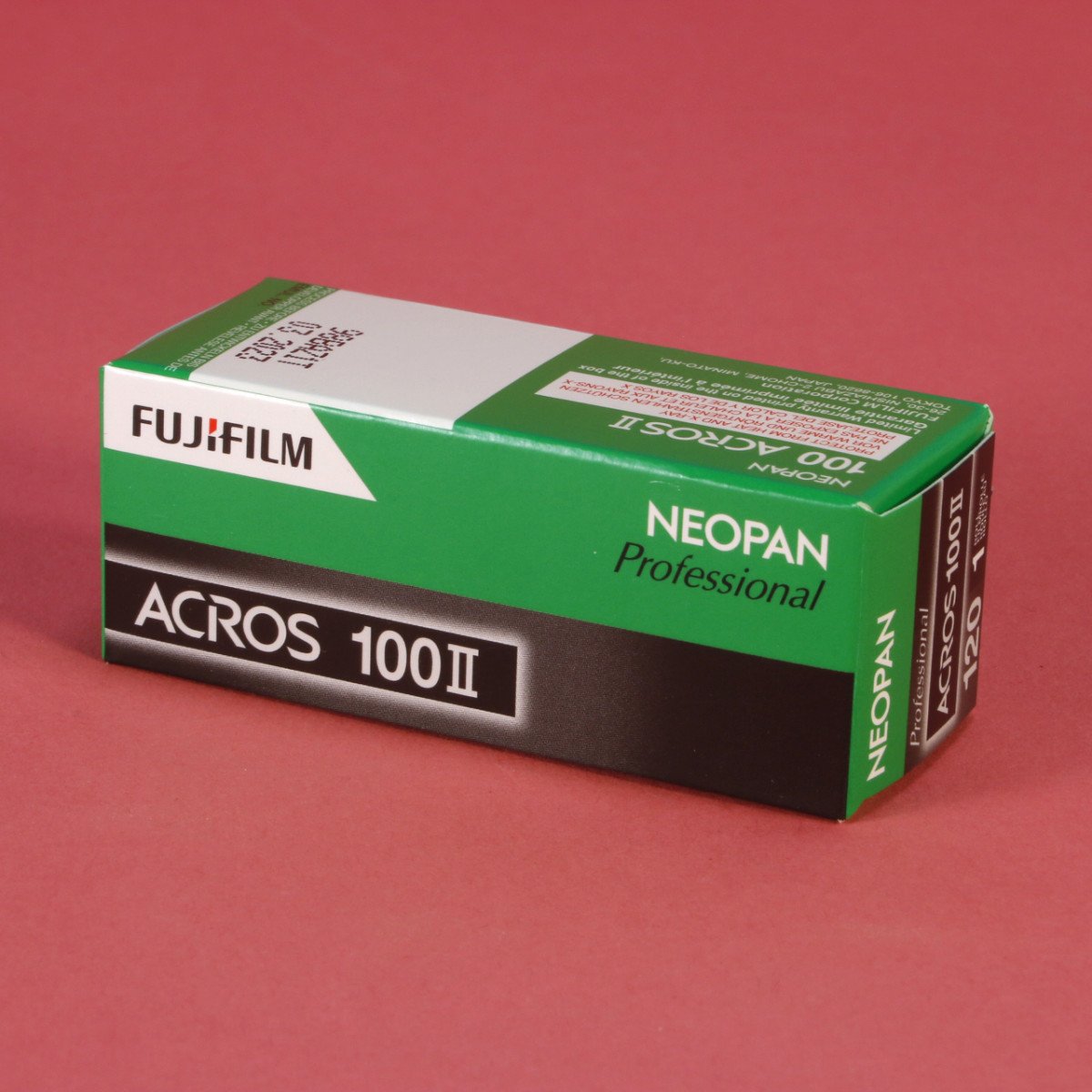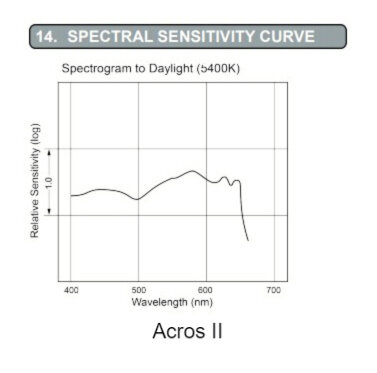Fuji Acros II Film Review
The original Fuji Acros film has long held a special place in our camera bags here at Blue Moon Camera. We’d say that the whole Neopan line of films was highly favored by us but we lost Neopan 400 and 1600 some time ago and Acros was the lone survivor. But Fuji Acros did more than just hold on, it got used and we have stacks of negatives shot on Acros. This is all to say that when the discontinuation of Acros was announced in 2018, we were as heartbroken as the rest of the film community. Apparently Fuji heard our collective outcry though and announced they would replace the original Acros with Acros II. Our despair quickly morphed into a near-intolerable impatience to see Acros II reach the market. That waiting game finally came to a conclusion a couple months back.
Initially Acros II was released only in Japan, but since we have a very interconnected global economy, it was not long before the film was available in limited quantities and high prices in Europe and even North America. Knowing that Acros II was slated for a North American release sometime in spring of 2020, we ordered a few rolls ahead of time from a shop in Europe, despite the steep price tag, because we wanted to have some time to shoot the film and get to know it a little before it officially hit our shelves and left us scrambling to familiarize ourselves with it. What follows is the result of two rolls of Acros II shot concurrently with a roll of the original Acros over the span of about a month. While our analysis is not going to be exhaustive by any means, we did try to approach it as thoroughly as we could. Consider this an in-depth first impression then.
Our methods:
We shot two rolls of Acros II 120 alongside a single roll of original Acros using a Hasselblad 500C and multiple film backs. We did not redundantly shoot each frame on both, as we only need a couple of comparison images and did not want to waste the roll of original Acros. The same exposures were used for both films and in the case of long exposures, the same reciprocity failure calculations. The films were developed in D-76 1:1 for 10.5 minutes at 20 degrees Celsius. In other words, the original Acros developing times. Individual images were scanned on a Nikon Coolscan 9000 ED at 4000dpi with single line scanning enable to minimize scanner noise affecting the appearance of film grain. Side-by-side comparisons were done by laying both negatives together on an Epson V800 flatbed and scanning them as one image to ensure the same scanner corrections were applied to each frame.
So now… our results:
Fuji Acros II. An eight minute exposure made with a Hasselblad 500C.
We could drastically shorten this review by simply telling you that Fuji Acros II is everything you hope and want it to be. It is essentially the same as the original Acros. It is incredibly fine grained, it is sharp and crisp, it has great midtone tonality… and yes, it sure seems to have the same reciprocity characteristics of its original. But let’s dig in just a bit and assume that some of you reading this have never tried the original or know just what it was about.
Fuji Acros II is a beautiful black and white film. It really excels in two areas: grain and reciprocity failure. Let’s start with the grain. Fuji Acros II uses what Fuji calls its “Fine-Sigma Grain Technology”. We haven’t dug into exactly what this technology is but we guess it is similar to Kodak’s T-grain or Ilford’s Delta grain technologies. The result is that Fuji Acros II is extremely fine grained, especially for its ISO 100 rating. The data sheet gives it an RMS value of 7 (the exact same value as the original Acros by the way). This is lower than TMax’s value of 8 and likely lower than Ilford’s Delta 100 as well, though Ilford does not publish grain indexes of their films.
The technical jargon aside, the results from Acros II are incredibly smooth and free of much perceptible film grain. It is worth noting that the appearance of grain can be influenced by exposure, developing and post-processing. But all things being equal, Acros II looks to continue the Acros tradition of delivering some of the finest grained images for ISO 100 black and white films. Let’s see an example or two.
Fuji Acros II showing just how smooth and clean an image it can produce. Shot on a Hasselblad 500C.
Visible grain in images is affected by several factors such as over or under exposures, developer choice and techniques, as well as changes to contrast and density in post-processing. The grain is more visible in this Acros II image partially due to slight over-exposure of the original scene combined with burning in of the sky for increased density in post. Image made with a Hasselblad Flexbody.
And finally, a side-by-side comparison of Acros II’s grain up against the grain structure of the original Acros film. Note the small box above overlayed on this image. It shows the size of the samples below.
Original Acros.
Acros II
Not only does it appear that the new Acros II is as fine grained as the original, it almost looks like it might be even slightly finer! But note, this is only one comparison and even if there is a difference between the two, it is splitting a pretty fine hair to get there.
So let’s move on to the second topic everyone wants to know about regarding Fuji Acros II: it’s reciprocity characteristics. The reciprocity curve of the original Acros film was one of the things photographers most loved about that film and one of the features they feared would be the hardest to replace when it was discontinued as there was no other film on the market quite as good at exposing under extremely low levels of light as Acros. Very briefly, reciprocity failure is a characteristic of all films that cause them to essentially slow down under very low light. Under normal circumstances when a photographer doubles the time of their shutter speed they also double their exposure. But when working under very dim light, such as nighttime, at a certain point films require more than double the time in order to double the exposure. For example, you may calculate that you need an eight second exposure based on your light meter, but in reality you need 10 seconds, or 15 seconds, because at that length of exposure the film is responding more slowly to light. Acros required very little reciprocity compensation. Fuji recommended only giving the film about a 1/2 stop of extra exposure for any shutter speeds between 2-16 minutes (120-1000 seconds). Other films often require 1-3 stops of additional exposure, if not more, to insure good negative density at these lengths of time.
So how does Acros II stack up? First off, the data sheets now available for Acros II look like they were cut and pasted from the original. According to them, Acros II has all the same reciprocity characteristics of its original. So we put it to several tests, making long exposures using the correction values of the original film. Every single one of those exposures turned out perfectly. The lead-off image we shared above was an 8 minute exposure with about 1 stop factored in (because we prefer to err on the side of over-exposure with our long exposure work). It was metered at about a 5 minute exposure and the extra 3 minutes were tacked on to help compensate. The sample image we used for grain comparison of Wahclella Falls was a 2 minute exposure with no compensation and again that resulted in a perfect negative. We feel pretty confident saying that not only does this film perform exceedingly well at long exposures, but based on our early results, it works exactly the same as the original Across.
A 30 minute exposure with only 1 stop of added reciprocity compensation. We really wanted to test how the film did at super long shutter speeds. That 1 stop was more than enough. Image made with a Hasselblad 500C.
But are the original Acros and the new Acros II identical? No, not quite. They are extremely close to one another, but they are not exactly the same. They are kind of like identical twins where one sibling has a birthmark the other doesn’t. At even long glances, they will appear the same and it is only under careful consideration can one spot the differences. And what are those differences? They are subtle, but Acros II seems to have a bit more contrast, especially in its midtones and shadows. We took a couple of redundant images - shot on both films at the same time and same settings and scanned together to insure even scanner corrections and you can spot the differences. Take a look.
Acros II on the left and the original Acros on the right. Scanned simultaneously and with no other adjustments made. The Acros II image shows slightly higher contrast in the midtones and slightly deeper shadows than the original Acros.
Another side-by-side comparison. The Acros II image on the bottom hints at a slightly different spectral sensitivity with its darker greens.
As you can see, side by side, they show their differences. But the image of the waterfall in particular got us to wondering if it was not just a difference in contrast but of tonal reproduction and spectral sensitivity. So we did what we always do when such curious thoughts arise, we turned to the data sheets. While the two have very, very similar spectral sensitivity curves, they are not identical. Acros II has a curve that differs in at least two ways. The first is that it has slightly decreased sensitivity at the UV end of the spectrum. It is slightly less sensitive to blues and greens than the original. Also, it is slightly more sensitive at the red end of the spectrum. Not only does its chart extend a bit farther into the red than the original Acros, but it also has an additional small peak of sensitivity before it drops off. Here, take a look.
Spectral sensitivity curve of the original Acros film.
Spectral sensitivity curve of Acros II.
They are very nearly the same, but not quite. How these differences will play out though would require more testing. If we had to make an educated guess, we would say that Acros II will render slightly darker blues and greens than the original but slightly lighter reds. So maybe skin tones will be a shade lighter and maybe vegetation a shade darker. It seems that something of that nature is going on with our comparison of the waterfall image above.
That pretty much concludes what we have learned from our first couple rolls of Acros II, combined with our years of experience using the original film. We have to say that we are extremely pleased with what we found in Acros II. It is everything we could have hoped for it to be as a replacement for the original. The subtle differences don’t bother us at all as we placed reciprocity and fine grain as our highest priority characteristics we wanted to see preserved in the new film.
So all we have left at the moment is to provide you with a link to the film on our website as a convenient means for you to purchase a roll yourself, along with a reminder that we exert a lot of influence as consumers in regard to the choices of film we have at our disposal. Ultimately Fuji discontinued the original Acros in part because our interest in it had waned. That is our interest had waned until they announced they were taking it away, and then we became agitated and clamored for it to be resurrected. We all managed to raise enough of a ruckus that Fuji heard and explored bringing Acros back in this new form. How long it remains on the market and in our camera bags is something we have a lot of say in. We weigh in on that conversation every time we buy a roll - or don’t buy a roll. Keep that in mind folks. If you try a roll of the Acros II and love it, then buy it as often as you can. Each sold roll is a vote that Fuji does tally and fold into their decisions regarding the future of their films.
But here you go, Acros II in our webstore.
All we have left now is a couple more sample images for you. Enjoy!
We have many favorite customers. Bob is right up there. Image made with a Hasselblad 500C.
A 15 minute exposure with no reciprocity compensation. Image made with a Hasselblad 500C.














